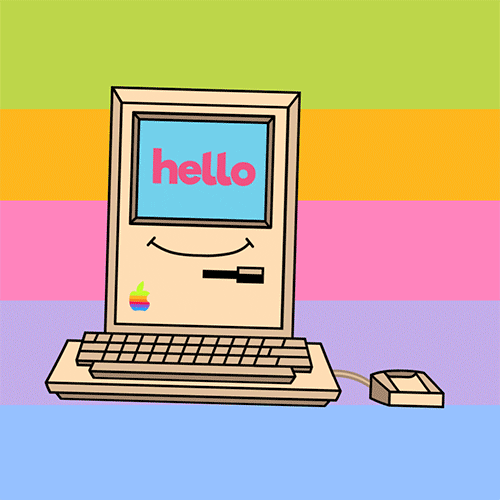Students as Digital Citizens
Digital citizenship. When I first heard this and was asked to write about it I was not even sure where to start.
I never thought of myself as a digital citizen, but once I actually sat down and thought about it I definitely am. I own and use a computer, iPhone, iPad and even an apple watch. I am constantly using social media platforms and I am using online material to educate myself on social life, society and politics and throughout my education degree. I have definitely gained a stronger digital citizenship since last year due to more classes being moved to remote learning.

But what about our students? Are they digital citizens? I would say absolutely. As long as you (the teacher) are using online materials, social media or technology in the classroom they are going to be digital citizens!
So how do teachers integrate digital citizenship in a safe way in the classroom?
Let’s start with the SK curriculum.
Using the SK curriculum and Ribble’s nine elements of digital citizenship I am going to make some connections regarding digital citizenship and the curriculum. I will be focusing on Kindergarten to Grade 5 because those are my areas of study. Before starting on the connection to the curriculum I would like to address digital access. Digital access is the 1st element in Ribble’s nine elements of digital citizenship. This is extremely important. How can we have digital citizenship if we do not have access to technology. The fair distribution of technology and technology resources needs to be met in the classroom and at home. We can’t expect students to go home and utilize a resource that they can’t access. If we are using technology in the classroom then we must make sure that we are aware their access to technology at home more specifically if they have access to computers at home. If possible, teachers should sign out/ loan out computers during off school hours. If this is not possible, be sure to print out materials that would otherwise be accessible online. Refrain from solely relying on technology unless you are able to provide access to technology both in class and at home.
Kindergarten
Outcome USCK.2, Indicators a, b, c & f – Using this part of the curriculum students can explore digital etiquette and Digital Health and Welfare. The 4th and 6th elements in Ribble’s nine elements of digital citizenship. As a class we can discuss ways in which we can be safe in the classroom and at home while using technology. We can also discuss ways to be positive and respectful to our classmates, peers and community members online. Discussing appropriate behaviour online and appropriate word choice that we use online will help to build a dynamic around etiquette, health and welfare.
Grade 1
Outcome AR1.1, Indicators a & b – Using this part of the curriculum students can explore Digital Communication and Collaboration the 3rd element in Ribble’s nine elements of digital citizenship. Here we can use elements of online collaboration, in partnership with digital health and welfare so that students may present materials, create online work, and have discussions in one collective and understanding environment. Students will learn how to share information in a way that is positive and understanding to all students.
Grade 2
Outcome CC2.1, Indicator a – Using this part of the curriculum students can explore digital rights and responsibility the 8th element in Ribble’s nine elements of digital citizenship. Here students can explore social responsibilities. Social responsibilities extends to online especially when students are given opportunities to use technology in the classroom. Discussions around helping others and informing adults when something does not feel right online can be had during this lesson. Students will ultimately learn through technology and one another that it is their social responsibility to protect others both online and offline.
Grade 3
Outcome CC3.3, Indicator a – Using this part of the curriculum students can digital communication and collaboration the 3rd element in Ribble’s nine elements of digital citizenship. Here students can use technology as a way to speak. They can learn skills and ways in which they can have enriching conversations using online platforms. These platforms can be used to discuss topics, share ideas, and complete tasks. As a class we can set up a platform like this for class use. The class will also have a discussion on sharing our thoughts appropriately and in a way that everyone understands.
Grade 4
Outcome DM4.1, Indicators a, b, d & f – Using this part of the curriculum students can explore explore digital fluency the 5th element in Ribble’s nine elements of digital citizenship. In this lesson two things can be taught, 1. how to use and understand technology and 2. How the decisions we make both online and offline are related to personal responsibility. We can explore why it is important to be able to make the responsible decision to identify what is real and fake when we find something online. We can also use decision making when it comes to the words we use online and how we have a responsibility to treat others with respect both online and offline.
Grade 5
Outcome SP5.1, Indicator d – Using this part of the curriculum students can explore explore digital commerce the 2nd element in Ribble’s nine elements of digital citizenship. Here we can discuss as a class the safeguards when buying, selling, banking or using money in the digital space. We can use second hand data and statistics about how people have used the digital space unsafely and safely regarding money usage. The teacher can use these statistics to make a point in why we use safeguards when it comes to using money online.
All of the above SK Curriculum connections can be used interchangeably through different grade levels in respect to particular outcomes and indicators.


I really enjoyed reading your article and found how you broke down the SK curriculum into a series of different outcomes was really enjoyable. At first, trying to take such a large element of digital citizenship then applying to something as large scale as the curriculum could be overwhelming for educators and students and this could allow for a focus to be applied.
Thank you! I was finding it difficult myself to sum up such a large element of digital citizenship but once I broke it down to particular outcomes and indicators I found that I was able to make the elements make sense regarding the classroom.
The way you displayed and explained how you would teach various digital elements gave me a sense of being in your classroom! I believe students would enjoy these lessons very much and would hit the mark on teaching digital citizenship. Great article 🙂
Thanks Jenn! I appreciate that I was able to get the elements connected to the curriculum out for others to use and see!